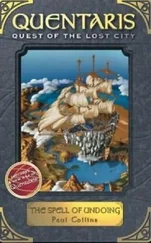Nathan Dole - The Spell of Switzerland
Здесь есть возможность читать онлайн «Nathan Dole - The Spell of Switzerland» — ознакомительный отрывок электронной книги совершенно бесплатно, а после прочтения отрывка купить полную версию. В некоторых случаях можно слушать аудио, скачать через торрент в формате fb2 и присутствует краткое содержание. Жанр: foreign_antique, foreign_prose, на английском языке. Описание произведения, (предисловие) а так же отзывы посетителей доступны на портале библиотеки ЛибКат.
- Название:The Spell of Switzerland
- Автор:
- Жанр:
- Год:неизвестен
- ISBN:нет данных
- Рейтинг книги:5 / 5. Голосов: 1
-
Избранное:Добавить в избранное
- Отзывы:
-
Ваша оценка:
- 100
- 1
- 2
- 3
- 4
- 5
The Spell of Switzerland: краткое содержание, описание и аннотация
Предлагаем к чтению аннотацию, описание, краткое содержание или предисловие (зависит от того, что написал сам автор книги «The Spell of Switzerland»). Если вы не нашли необходимую информацию о книге — напишите в комментариях, мы постараемся отыскать её.
The Spell of Switzerland — читать онлайн ознакомительный отрывок
Ниже представлен текст книги, разбитый по страницам. Система сохранения места последней прочитанной страницы, позволяет с удобством читать онлайн бесплатно книгу «The Spell of Switzerland», без необходимости каждый раз заново искать на чём Вы остановились. Поставьте закладку, и сможете в любой момент перейти на страницу, на которой закончили чтение.
Интервал:
Закладка:
Renée, after her father’s fortune was lost, failed to make a suitable marriage, but she lived in Lausanne until 1848, and people used to go to call on her. They loved her for the brilliancy of her mind and her exquisite old-fashioned politeness. She knew Voltaire and all the great men of his time.
Another of the châteaux which we mentioned but were not certain that we could see was that of l’Isle, situated at the base of Mont Tendre in the valley of the Venoge. To this, also, we made an excursion one afternoon. It must have been splendid in its first equipment. It was built for Lieutenant Charles de Chandieu on plans furnished by the great French architect, François Mansard, whose memory is preserved in thousands of American roofs. In its day it was surrounded by a fine park. One room was furnished with Gobelin tapestries, brilliant with classic designs. Other rooms had tapestries with panels of verdure in the style of the Seventeenth Century. The salon was floored with marble (“the marble halls” which one might dream of dwelling in) and hung with crimson damask, setting forth the family portraits and the painted panels. On the mantels were round clocks of gilt bronze, while huge mirrors, resting on carved consoles, reflected the brilliant companies that gathered there to dance or play. There was an abundance of high-backed armchairs and sofas, or as they called them, canapés , upholstered in velvet, commodes in ebony adorned with copper, and marquetry secretaries.
On the ground floor there was a great ballroom hung with splendid Cordovan leather. As it had a large organ it was probably used as a chapel, for the family was musical and several of the ladies of the Chandieu family composed psalms – Will called them chants-Dieu , which was not bad.
From the entrance-hall a splendid stairway, still well-preserved, with its wrought-iron railing led up to the sleeping-rooms, which were furnished with great beds à la duchesse with satin baldaquins. Among the treasures was a beautiful chest of marquetry bearing the coat-of-arms quartered; it was a marriage-gift. Another, dated 1622, came from the Seigneur de Bretigny.
In front was a terrace with steps at the left leading down to the water. On each side of the stately main entrance, which reached to the roof, well adorned with chimneys, were three generous windows on each floor. In front there was a wide and beautifully kept lawn. The property was sold in 1810 for one hundred and seventy thousand francs. It came into the hands of Jacques-Daniel Cornaz, who, in 1877, sold it again for two hundred thousand. It now belongs to the Commune and is used for the écoles séculaires . The wall that once surrounded it has disappeared and the prosperous farms once attached to it were sold.
There is nothing in the literature of domestic life more fascinating than the diary and letters of Catherine de Chandieu, who married Salomon de Charrière de Sévery. They inherited the charming estate of Mex with its châteaux, and one of them, with a queer-shaped apex at each corner and a fascinating piazza, became their summer home. Another of these fine old places was the Château de Saint-Barthélemy, which belonged to the Lessert family for three or four generations; then came into the possession of the famous Karl Viktor von Bonstetten, the author and diplomat, and was bought in 1909 by M. Gaston de Cerjat. In the hall hung pictures of several French kings, probably presented because of diplomatic services. Many of these old manor-houses on the shores of the Lakes of Geneva and of Neuchâtel have come into the possession of wealthy foreigners who have modernized them; others are now asylums, or schools, or boarding-houses.
But in those days they were filled with a cultivated and hospitable gentry who were always paying and receiving visits.
Really there is no end to the romance of these old houses; yet, curiously enough, most of them were carefully set down in little valleys which protected them from cold winds, but also from the magnificent views which they might have had. Even when they were on hills, trees were so planted as to hide the enchanting landscape, the lake and the gleaming mountains. Albrecht von Haller, the Bernese poet and novelist, Charles de Bonnet of Geneva, and Rousseau at Paris, “lifted the veil from the mountains” and made the world realize that the lake was something else than a trout-pond.
It was time for us to be getting back. While we were on Le Signal some aerial Penelope had woven a web of delicate cloud and spread it out half-way up the Savoy Mountains across the lake; everything had changed as everything will in a brief half-hour. There were different gorges catching sunbeams, and tossing out shadows; there was another tint of violet over the waters. I suggested a plan for describing mountain views. It was to gather together all the adjectives that would be appropriate – high, lofty, massive, portentous, frowning, cloud-capped, craggy, granitic, basaltic, snow-crowned, delectable and so on, just as Lord Timothy Dexter did with his punctuation-marks, delegating them to the end of his “Pickle for the Knowing Ones,” so that people might “pepper and salt” it as they pleased. If I wrote a book about Switzerland – that is, if I find that my impressions, jotted down like a diary, are worth publishing, I mean to add an appendix to contain a sort of armory of well-fitting adjectives and epithets for the use of travellers and sentimental young persons. In this way I may be recognized as a benefactor and philanthropist.
“Do you know what is the origin of the name, Lausanne?” asked Will, arousing me from a revery caused by the compelling beauty of those gem-like peaks, that rippling ridge of violet-edged magnificences that loomed above the glorious carpet of the lake. The pedigree of names is always interesting to me. Philology has always been a hobby of mine.
“Why, yes,” said I, “that is an easy one. It comes from the former name of the river, Flon. The Romans used to call the settlement here Lousonna. Almost all names of rivers have the primitive word meaning water, or flow, hidden in them. The Aa, the Awe, the Au, the Ouse, the Oise, the Aach and the English Avon, and a lot more, come from the Old High German aha , and that is nothing but the Latin aqua . The Greek hudor is seen in the Oder, the Adour, the Thur, the Dranse and even in the Portuguese Douro; and the Greek rheo , ‘I flow,’ is in the Rhine and the Rhône and the Reuss and in the Rye.”
“So I suppose you derive Lausanne from the French l’eau .”
As I passed in silent contempt such an atrocious joke as that, he seized the opportunity to tell me about the Frenchman who had some unpleasant associations with the inhabitants and declared it was derived from les ânes – the asses.
“From all I have read about them,” I replied, “they must have been a pretty narrow-minded, bigoted set of people here. Way back in 1361 an old sow was tried and condemned to be hanged for killing a child; and about the middle of the next century a cock was publicly burned for having laid a basilisk’s egg. One of the worthy bishops of Lausanne, – did you ever hear? – went down to the shores of the lake and recited prayers against the bloodsuckers that were killing the salmon.”
“Was that any more superstitious than for present-day ministers to pray for rain?”
“I suppose not; only it seems more trivial,” I replied absently, as I gazed down upon the housetops. “I did not realize Lausanne was so large.”
“The city is growing, Uncle. Toward the south and the west you can see how it is spreading out. There is something tragic to me in the outstretch of a city. It is like the conquest of a lava-flow, such as I once saw on the side of Kilauea, in the Hawaiian Islands; it cuts off the trees, it sweeps away the natural beauties. Lausanne has trebled its population in fifty years. It must have been much more picturesque when Gibbon lived here. For almost eighty years they have been levelling off the hills. It took five years to build the big bridge which Adrien Pichard began, but did not live to finish. The bridge of Chauderon has been built less than ten years.”
Читать дальшеИнтервал:
Закладка:
Похожие книги на «The Spell of Switzerland»
Представляем Вашему вниманию похожие книги на «The Spell of Switzerland» списком для выбора. Мы отобрали схожую по названию и смыслу литературу в надежде предоставить читателям больше вариантов отыскать новые, интересные, ещё непрочитанные произведения.
Обсуждение, отзывы о книге «The Spell of Switzerland» и просто собственные мнения читателей. Оставьте ваши комментарии, напишите, что Вы думаете о произведении, его смысле или главных героях. Укажите что конкретно понравилось, а что нет, и почему Вы так считаете.












